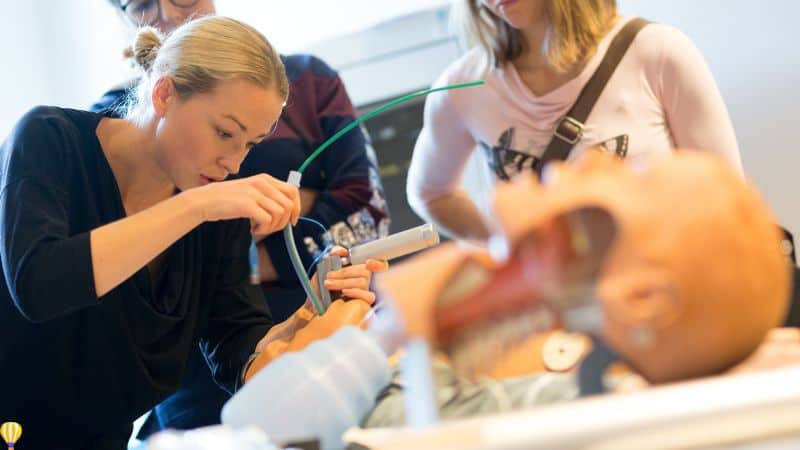Back in 2007, I began teaching leadership. I quickly saw that the success of a program depends a lot on the person leading it: the facilitator. These people do more than just teach; they inspire, challenge, and support future leaders.
From my early days to now, I’ve learned how important it is to choose and train facilitators well. This makes every session powerful and effective.
When I first started, I didn’t realize how crucial the facilitator’s role was. Over time, I saw that the best facilitators didn’t just deliver information—they made it come alive.
They could take a room full of people and turn them into engaged, excited learners. This realization shaped how I approached selecting and training facilitators, focusing on their ability to connect with participants.
Choosing the Right People
It’s not enough to find smart people. We need those who can really connect and engage with the participants. Facilitators should have the leadership qualities we want to teach: confidence, clarity, and empathy. They should be good at guiding others on their leadership journey.
Finding the right people means looking beyond resumes. It’s about finding individuals who naturally inspire and motivate others. They need to be confident in their own abilities but also humble enough to listen and adapt.
A great facilitator communicates clearly and empathetically, making participants feel valued and understood. This connection is what drives effective learning and development.
Bringing Learning to Life
A great facilitator makes the material exciting and easy to understand. They create a space where learning isn’t just possible—it’s guaranteed. Participants don’t just learn; they change.
Good facilitators use stories, examples, and interactive activities to make lessons stick. For instance, instead of just talking about leadership theories, they might share a personal story of a leadership challenge they faced. They could then guide a discussion on how to apply these lessons in real-life situations. This method helps participants see the relevance of what they’re learning and feel more connected to the material.
Facing Challenges
At first, finding the right people was tough. It wasn’t just about knowing the subject. Teaching—being a facilitator—is a different skill. Many great leaders are good at doing things, but teaching them is another story.
Also, facilitators need to handle diverse groups without bias and keep an inclusive atmosphere. This means constant training to stay sharp and sensitive to different group dynamics.
One of the biggest challenges was realizing that subject matter expertise doesn’t always translate to teaching ability. Many skilled professionals struggle to convey their knowledge effectively.
Additionally, facilitators must be adept at managing a diverse group of participants. They need to create an inclusive environment where everyone feels respected and heard, which requires ongoing training and awareness.
The Role of Facilitators
A good facilitator can make a big difference. They turn theory into practical, useful knowledge. They help participants remember and use new skills for years.
Facilitators are the bridge between theoretical concepts and practical application. They take complex ideas and break them down into understandable, actionable steps. This helps participants not only grasp the material but also apply it in their daily lives. For example, a facilitator might teach time management techniques that participants can use immediately, leading to lasting changes in their productivity.
Finding the Best Facilitators
We have to find people who mix expertise, teaching ability, and leadership experience. This involves:
- Clear Selection Criteria: We set clear rules for what makes a good facilitator, focusing on their knowledge, teaching skills, and soft skills like empathy and communication.
- Rigorous Selection Process: Our selection process is thorough—interviews, teaching demonstrations, and trial runs to see them in action.
- Comprehensive Training: Once selected, facilitators receive thorough training. They learn the course material in-depth and practice various teaching techniques. This training also includes managing group dynamics and engaging different types of learners to ensure everyone benefits from the sessions.
- Continuous Development: Learning doesn’t stop after the initial training. We provide ongoing professional development to keep facilitators up-to-date with the latest leadership theories and teaching methods. This continuous learning helps them stay effective and relevant.
- Regular Feedback and Evaluation: We regularly collect feedback from participants to understand what works and what doesn’t. Peer reviews and self-assessments help facilitators reflect on their performance and identify areas for improvement.
- Support Network: Facilitators benefit from a network of peers and mentors. This community allows them to share experiences, learn from each other, and continually improve their skills.
- Focus on Inclusivity: Our training emphasizes the importance of diversity and inclusivity. Facilitators learn to create an environment where everyone feels welcome and respected, which is crucial for effective learning.
The Impact of Great Facilitators
Since 2007, I’ve learned that with the right facilitator, leadership training is more than just sharing knowledge—it transforms people. By carefully selecting and training these key individuals, we ensure our programs deliver real change.
Great facilitators do more than teach; they inspire change. Participants leave sessions not only with new knowledge but also with a renewed sense of purpose and confidence.
They are equipped to apply what they’ve learned, leading to lasting improvements in their personal and professional lives.
The ripple effect of this transformation can be seen in the positive changes they bring to their organizations and communities.



